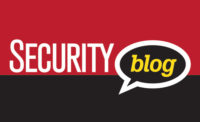Professional and collegiate stadiums and arenas have been identified by the Department of Homeland Security as potential targets for terrorist activity. Now, with the recent bombing incident at the Boston Marathon, team owners, city officials and university presidents will be re-evaluating their preparedness against potential threats.
Sports events in the United States offer the potential for a large number of casualties as well as widespread media coverage and economic impact. The fear resulting from an incident or series of incidents would cripple a multi-billion-dollar industry.
In order to address the need for improving sport event security, the National Center for Spectator Sports Safety and Security was established with funding from DHS at the University of Southern Mississippi. One of the major efforts has been the research and development with an effective security management system designed to assist team owners, city officials and university presidents evaluate their risk management system. NCS4 has been offering Sport Event Security Aware (SESA) certification to all professional, collegiate and outdoor access organizations that own or operate sports events.
SESA certification is a reasonable and attainable body of standards that addresses preparedness, prevention, response and continuity efforts at sports facilities.
The core of SESA is a set of scalable standards for assessing risks; identifying vulnerabilities; developing appropriate plans, policies and procedures; and providing training to facility staff. The result is a continual four-year cycle to review and upgrade safety, security and incident management programs at participating sports facilities.
Table 1 illustrates the SESA Certification Continuous Improvement Cycle. These phases create a cycle of continuous improvement that encourages organizations to remain up-to-date, explore innovative strategies and utilize current technologies.
Risk Assessment: The assessment phase is intended for organizations to identify risks, review/enhance emergency plans and begin working on developing capabilities to designated standards.
Training: During the training phase individualized programs are developed that include leadership, supervisory and line staff training. As training needs are satisfied and new needs identified, the training phase evolves as required. The expectation is that organizations will view the training phase as an opportunity to enhance employee capabilities, therefore improving operations.
Exercises:At least one NCS4 exercise is conducted each year along with small drills. Exercises are based on information obtained from the risk assessment. Small-scale drills are intended to test actual capabilities at the facility during an event. The exercise phase provides an opportunity for organizations to identify gaps and enhance relationships with their partners.
Validation: During the validation phase, certification assessors analyze plans, procedures, training and conduct onsite assessment of event operations.
Certification Process and Minimum Requirements
Familiarity with the scope and complexity of the criteria will enable an organization to make an informed and reasoned decision about initiating the certification process. Listed below are the steps of the process.
Initial Contact: An organization considering certification will be instructed to complete the DHS Risk Self-Assessment Tool (RSAT) and develop an after-action improvement plan based on RSAT results. The Risk Self Assessment Tool is a free, Web-based tool that delivers an all-hazard analysis of a facility’s current risk level and offers options for reducing and managing potential vulnerabilities.
Preparation for Certification: Organ-
izations submit the RSAT results and after-action improvement plan to NCS4.
Document Submission:Organizations submit relevant documents and plans to NCS4 in order to ensure that the basic elements of safety, security and incident management have been addressed.
Site Assessment:An Assessor Team conducts the onsite assessment. This assessment includes a tour of facilities, interviews with facility personnel as well as personnel from outside organizations (present at the facility during an event), and exercise preparation.
Compliance Review: The Compliance Review Panel (CRP) evaluates the information contained in the assessment report, and they can ask for more detailed written information or interviewing assessors.
Certification Decision: The NCS4 Certification Commission reviews the CRP's recommendation and conducts a vote to award certification.
Award Period:Certification is awarded for a four-year period (continuous improvement cycle). Continuing certification activities include, but are not limited to:
- On-site event assessments
- Annual exercises facilitated by assessors
- Submission of an annual self-assessment report
Reassessment: Certified organizations undergo full reassessments every four years, upon expiration of the certification. The reassessment process follows the application and initial assessment process. The assessment team considers the data from current and previous years in making their assessment recommendations.
Monitoring Process and Four-Year Review Cycle: Organizations awarded SESA annually submit a Continuous Improvement Inventory with an attestation that plans and documents required under SESA have been reviewed and updated when necessary.
Continuous Improvement Cycle
The essence of continuous improvement lies in employees’ involvement. At sports facilities, this happens when they improve processes and services by applying their creative faculties on their work-related problems and routine jobs. Creating a culture of continuous improvement provides employees a platform to unleash their creativity.
Continuous Improvement Inventory
Continuous improvement is the foundation of SESA Certification. The Continuous Improvement Inventory provides a set of metrics to conduct assessments and is intended to serve as a “road map” for organizations to use to make those improvements. These efforts can seek “incremental” improvement over time or “breakthrough” improvement all at once. Sports facilities that continually improve the way they work stay ahead of the competition and set the standard for the rest to follow. The areas covered are:
Intelligence Gathering/Sharing: Sharing information through the use of more than one, inter-related source.
Restrict Area Perimeter: Securing and monitoring the perimeter of the facility when facility is closed to the general public.
Secure Site Access: Controlling access to the facility during games and events.
Screen and Control Access:Controlling access to the facility during games and events by screening and/or inspecting individuals and vehicles as they enter.
Shipping, Receipt and Storage: Securing and monitoring receipt of deliveries.
Theft and Diversion: Deter theft or diversion of facility property
Sabotage: Deterring insider sabotage.
Cyber: Deterring cyber sabotage, including preventing unauthorized onsite or remote access to critical process controls.
Response: Developing an emergency plan for responding to incidents internally and with assistance of local law enforcement and first responders.
Monitoring:Maintaining effective monitoring, communications and warning systems.
Training: Ensuring proper security training, exercises and drills of facility personnel.
Personnel Surety: Performing appropriate background checks on and ensure appropriate credentials for facility personnel, and as appropriate, for unescorted visitors with access to restricted areas or critical assets.
Elevated Threats:Escalating the level of protective measures for periods of elevated threat.
Reporting of Significant Security Incidents: Reporting significant security incidents to the Department and to local law enforcement officials.
Significant Security Incidents and Suspicious Activities: Identify, investigate, report and maintain records of significant security incidents and suspicious activities in or near the site.
Officials and Organization: Establishing official(s) and an organization responsible for security and for compliance with these standards.
Records: Maintaining appropriate records.
Evacuation and Shelter-In-Place: Directing the movement of all occupants during an incident.
Public Information: Provide information to the media and the public.
Business Continuity:Maintaining business viability before, during and after an incident.
Game/Event Day Operations: Protecting “fan experience” and occupant safety.
Food and Beverage Protective Measures: The ability to protect food and beverages from intentional contamination.
Inspections: Inspecting structures, components and equipment.
Catastrophic events and elevated terrorist activity serve as constant reminders that sporting venues are vulnerable to disasters that can result in significant damage to property, personnel injury and loss of life. Taking the lead and securing the sporting event with an effective security management system will accomplish the following:
- Protect facility occupants – spectators, officials, competitors and employees – by employing current best practices for facility safety and security.
- Protect an organization’s brand through improved event operations, heightened incident response capabilities and identification of business continuity issues.
- Facilitate compliance with the sanctioning body relative to minimum security and safety standards.
- Facilitate compliance with the regulatory requirements of municipal, county, state and federal agencies.
- Enhance image and credibility with a pro-active stance in safety, security and incident management.
- Enhance the ability to recover from financial losses, regulatory fines, loss of market share, damages to equipment or products.
- Reduce exposure to civil or criminal liability in the event of an incident.
For more information, please go to ww.ncs4.com.




